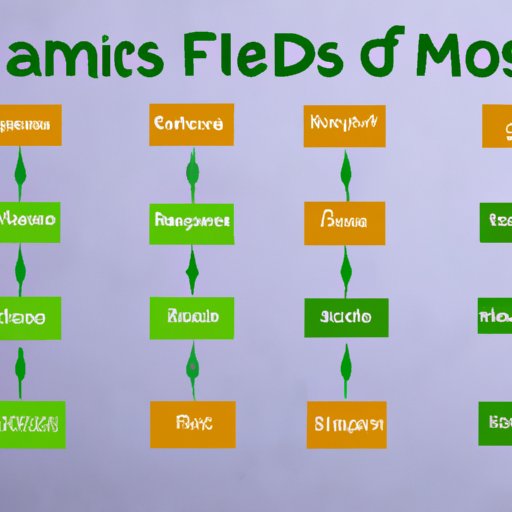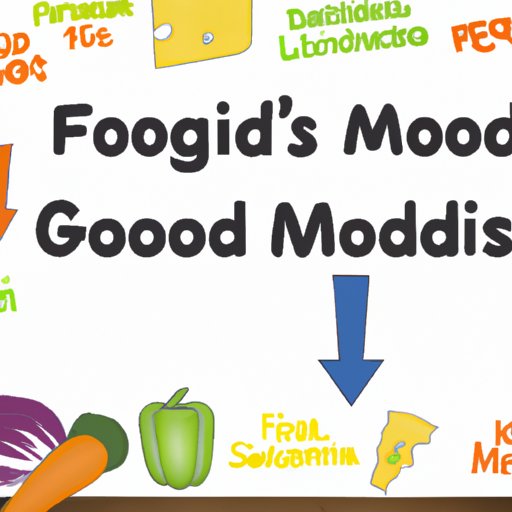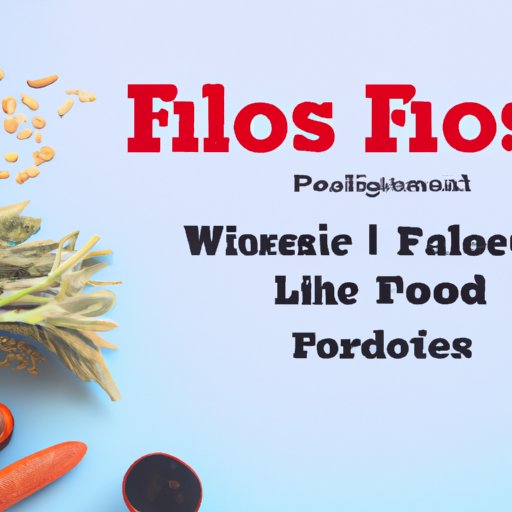Introduction
A FODMAP diet is a specialized eating plan that helps reduce symptoms of irritable bowel syndrome (IBS) and other digestive issues. The diet is based on eliminating certain types of carbohydrates known as fermentable oligosaccharides, disaccharides, monosaccharides, and polyols (FODMAPs). FODMAPs are found in many common food items, including wheat, dairy, certain fruits and vegetables, and sweeteners.
What are the Benefits of a FODMAP Diet?
The primary benefit of following a FODMAP diet is improved digestive health. Studies have shown that reducing FODMAPs can significantly reduce symptoms of IBS, including bloating, abdominal pain, and diarrhea. Additionally, the diet may also be beneficial for those with other digestive conditions, such as lactose intolerance or small intestinal bacterial overgrowth (SIBO).
A Guide to a Low-FODMAP Diet for IBS Sufferers
If you’re considering trying a low-FODMAP diet for IBS, there are a few key things to keep in mind. Here’s a guide to getting started:
What Foods to Avoid
The first step of any FODMAP diet is to eliminate high-FODMAP foods from your diet. This includes wheat, dairy products, certain fruits and vegetables, sweeteners, and processed foods. It’s important to note that some of these foods may contain trace amounts of FODMAPs, so it’s best to avoid them altogether if possible.
What Foods to Eat
Once you’ve eliminated high-FODMAP foods from your diet, you can begin to reintroduce low-FODMAP foods. These include most lean meats, fish, eggs, nuts, seeds, and certain fruits and vegetables. Some dairy products, such as hard cheeses and yogurt, can also be consumed in moderation.
How to Transition to a Low-FODMAP Diet
Transitioning to a low-FODMAP diet can be challenging, as it requires significant dietary changes. To make the transition easier, start by eliminating the most obvious high-FODMAP foods from your diet, such as wheat and dairy products. Then, gradually add in more low-FODMAP foods over time. It’s also helpful to keep a food diary to track your symptoms and identify which foods may be causing them.

An Overview of the Different Types of FODMAPs
FODMAPs are a group of carbohydrates that can be difficult for the body to digest. They are classified into four categories:
Monosaccharides
Monosaccharides are simple sugars, such as fructose, which is found in fruit and honey. Fructose is often used as a sweetener in processed foods and is not easily digested by the body.
Disaccharides
Disaccharides are two-sugar molecules linked together, such as lactose, which is found in dairy products. Lactose is difficult for the body to break down and can cause digestive distress.
Oligosaccharides
Oligosaccharides are short chains of three to nine sugar molecules, such as fructans and galacto-oligosaccharides (GOS). Fructans are found in wheat, onions, garlic, and other vegetables, while GOS are found in legumes and beans.
Polyols
Polyols are sugar alcohols, such as sorbitol, mannitol, and xylitol. These are often used as sweeteners in sugar-free foods and can be difficult for the body to digest.

Understanding How FODMAPs Affect Digestion
FODMAPs can cause digestive distress due to their effects on gut bacteria. When FODMAPs are not completely broken down in the small intestine, they travel to the large intestine, where they are fermented by gut bacteria. This fermentation process produces gas, which can lead to bloating, cramping, and other IBS symptoms.
Symptoms of FODMAP Intolerance
Common symptoms of FODMAP intolerance include abdominal pain, bloating, gas, constipation, and diarrhea. If you experience any of these symptoms after eating certain foods, it may be a sign that you are intolerant to FODMAPs.
How FODMAPs Contribute to IBS Symptoms
Research suggests that FODMAPs can contribute to IBS symptoms by increasing the amount of fluid in the intestines and altering the balance of gut bacteria. A study published in the journal Gastroenterology found that those who followed a low-FODMAP diet had less abdominal pain, bloating, and diarrhea than those who did not follow the diet.

Shopping and Meal Planning Tips for a FODMAP Diet
Following a FODMAP diet can seem overwhelming, but it doesn’t have to be. Here are some tips for making grocery shopping and meal planning easier:
Grocery Shopping Tips
When grocery shopping, read labels carefully to ensure the foods you are buying do not contain high-FODMAP ingredients. It’s also helpful to create a grocery list ahead of time to ensure you stay on track. Additionally, if possible, shop at stores that specialize in low-FODMAP foods.
Meal Planning Tips
When planning meals, focus on low-FODMAP options such as lean proteins, fruits, vegetables, and whole grains. Make sure to include a variety of colors and textures to ensure your meals are balanced and nutritious. Additionally, it’s helpful to prepare meals ahead of time so you always have something healthy and low-FODMAP to eat.
Comparing FODMAP Diets to Other Specialized Diets
FODMAP diets are similar to other specialized diets, such as gluten-free, paleo, and low-carb diets. While all of these diets have different goals, they share some commonalities. For example, all of these diets emphasize whole, unprocessed foods, limit sugar intake, and are focused on improving overall health.
Gluten-Free Diets
Gluten-free diets are designed to eliminate foods containing gluten, a type of protein found in wheat, barley, and rye. Gluten-free diets are often recommended for those with celiac disease or non-celiac gluten sensitivity. Unlike FODMAP diets, gluten-free diets do not focus on eliminating other types of carbohydrates.
Paleo Diets
Paleo diets are based on the idea of eating like our ancestors did during the Paleolithic era. These diets emphasize whole, unprocessed foods and focus on eliminating processed foods, grains, and dairy. While FODMAP diets limit certain carbohydrates, they do not restrict grains or dairy like paleo diets do.
Low-Carb Diets
Low-carb diets are designed to reduce carbohydrate intake in order to promote weight loss. These diets typically involve limiting certain types of carbohydrates, such as refined sugars, starches, and grains. While FODMAP diets do limit certain carbohydrates, they do not restrict all carbs like low-carb diets do.
Conclusion
The FODMAP diet is a specialized eating plan that can help reduce symptoms of IBS and other digestive disorders. By eliminating high-FODMAP foods and incorporating low-FODMAP foods into your diet, you can improve your digestive health and feel better overall. It’s important to remember that everyone is different and what works for one person may not work for another. If you think a FODMAP diet could be beneficial for you, consult with a healthcare professional before making any changes to your diet.
(Note: Is this article not meeting your expectations? Do you have knowledge or insights to share? Unlock new opportunities and expand your reach by joining our authors team. Click Registration to join us and share your expertise with our readers.)
